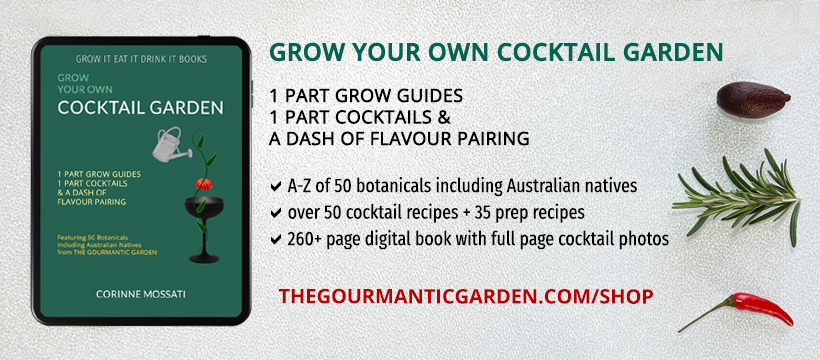Next in our Essential Guides series, we present the Essential Guide to Tiki: everything you need to know about Tiki, a brief history, Tiki resurgence, common Tiki spirits and modifiers, Tiki tools and Tiki holidays.

For the Essential Guide to Tiki, we’ve enlisted the help of two Tiki experts in Australia, Mitch Wilson and Tom Bulmer.
Mitch Wilson landed his first bar shift at London’s favourite Tiki bar, Trailer Happiness, and is Australia’s self-appointed Ambassador for Pineapples.
Tom Bulmer started his Tiki love working at the notorious Mahiki in London, came home to Sydney and took over the running of Sydney Rum Club which he has been running for 8 years. He started the Sugarcane Sunday rum festival and runs Tiki Face Off cocktail competition in Australia. He is also a self-appointed Coconut Ambassador (pineapples were taken).
What is Tiki
For Tom Bulmer, Tiki is about a culture of tropical happiness and hedonistic escapism. It’s an intoxicating love of all things tropical, good company and great drinks, a love of life and spreading the happiness to those around you. There’s no doubt that Hawaiian shirts, flowers and burning pineapples form symbols of this but they are more the tools by which we dedicate towards the pursuit of Tiki.
Tiki culture is in some ways wanting to make people happy. It’s never been so important in bars to have a little Tiki. As bars become more specialised and bartenders more serious, bartending is about making people welcome and not about drinking what bartenders perceive as the ‘correct’ drinks.
For Mitch Wilson, Tiki is a rum-fuelled voyage of escapism. The moment you walk through a Tiki bar’s doors, you’re transported into another world. From the beginning, that world has been curated by larger than life characters – Don the Beachcomber and Trader Vic were the first, and Tiki bars definitely benefit from a larger than life character to keep the experience alive.
Tiki isn’t sweet sugary drinks or bright neon cherries. Unfortunately Tiki suffered heaviest from the aberration of cocktails that started to surface in the 70’s and 80’s, possibly a direct correlation between the invention of sour mix and the downfall of Tiki. Everything about Tiki and its exoticism relied on the use of fresh and exotic ingredients. Tiki drinks can’t survive on cheap or unnatural ingredients. We wouldn’t expect it in our normal modern day cocktails, so why would we in Tiki?
Brief History of Tiki
Tiki began in the 1930’s with Don the Beachcomber who pioneered the Tiki movement. At the time, it would have been one of the first examples of a ‘themed’ bar. Except unlike bars today which aim to recreate a certain time or period in history, Don the Beachcomber created a world that had never existed. Using rare and unusual pieces collected from his travels, he created a fantasy that allowed Americans at the time to escape for a short while what would have been the Great Depression. Don’s bar opened the same year prohibition ended – while prohibition or speakeasy themed bars are popular today, back then Tiki was the antidote, and a sign of better drinks to come.
Aside from the culture, it was the drinks that were revolutionary. Before Tiki, people didn’t play much with exotic fruits or garnishes. Stirred down whisky and cognac drinks were far more commonplace, and rum had certainly never taken centre stage. Don’s drinks were so revolutionary that he kept all his recipes a guarded secret, and would even have them made not in the bar but in a back room, with the drinks appearing only after they’d been fully created by his team of barbacks. The mysterious origins of Tiki and its drinks, helped fuel the fantasy.
Resurgence of Tiki
If Tiki’s downfall was the introduction of cheap ingredients and essentially selling out, then Tiki’s resurgence is tied in with the return of quality drinks and ingredients, and bartenders who are passionate about bringing Tiki back bigger and better than before. There are bars around the world that are pioneering Tiki’s resurgence – Trailer Happiness (London), Dirty Dick (Paris), Smuggler’s Cove (San Francisco), Lost Lake (Chicago), Latitude 29 (New Orleans) – all all bringing Tiki back as the experience it was meant to be, amazing drinks, theatre, and fun. As important as the venue is, each has its own character that makes it brilliant, and ensures the drinks and the rum never stop. Bartenders like Jeff ‘Beachbum’ Berry, Martin Cate, Paul McGee, Paul McFadyen, and Scotty Schuder have all been vital to Tiki’s resurgence in these past few years.
Tom Bulmer attributes the Tiki resurgence to the fact that people, both guests and bartenders, were getting a little tired of being so serious when they drink cocktails. Ultimately people go to bars to have fun and Pina Colada served out of a hallowed out pineapple is fun. There has been a massive shift from the speakeasy to dive bars, but the quality of drinks hasn’t changed. It’s been predominantly whisky bars in Australia but it opens the doors for the Tiki bar resurgence because this is what rum was all about in the 30’s and 40’s: fresh tropical drinks in a relaxed, fun environment.
Tiki Bars in Australia
While Australia has some great rum bars, not all rum bars are Tiki, and Tiki bars are few and far in between. In Perth, there’s the long running Hula Bula Bar and the new Tiki as FK. Brisbane has Tiki Tiki Gai and Jungle Bar. Melbourne has Jungle Boy and Palm Royale. Canberra is soon to have a Tiki bar of its own, Kokomo. Jacoby is opening in Sydney and there’s Mojito Joe’s in Avoca Beach.
Click next page for the types of rum used in Tiki, liqueurs, syrups and modifiers, Tiki tools, Tiki cocktails and Tiki Drink Holidays.

